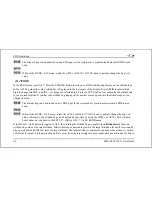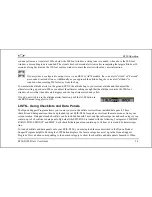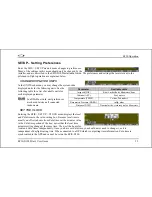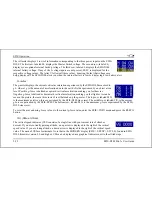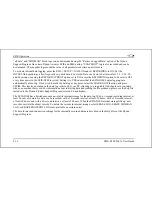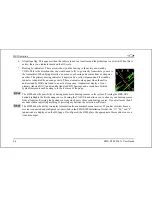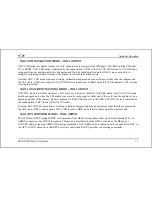
HSI Operation
6-2
EFIS-D100 Pilot’s User Guide
All HSI screens in a DSAB network share their configuration and are identical to one another at all times.
Changing the source of information on one HSI page affects all units, as does changing scaling, bugs, or bearing
pointers. It is not possible to show a NAV radio on one screen and a GPS on another screen.
HSI Display Basics
There are three possible sources of information on the HSI page: GPS, NAV, and internal EFIS data. It is important to
know what equipment is sourcing your data, so most displayed data is color coded so that it is easy to identify the source
of the data. Data that is sourced from a GPS unit is color coded in magenta, and includes course direction, course
deviation, vertical guidance, ground track, ground speed, altitude, distance to waypoint, and other data. Data that comes
from a navigation radio (VOR / LOC) is green in color and includes the course, course deviation, glideslope, NAV
mode, to/from, OBS setting, tuned frequency, station identifier, and more. The final data source is information that
comes from the EFIS itself and is color coded in white. The EFIS-sourced data includes magnetic heading, true airspeed,
winds, and various other data points. Below are some of the basics
1.
Mode flag. This indicator, located at the upper left of the HSI page, tells you what mode the radio and
display are in. There are five options for this indicator.
a.
"GPS" in magenta text: This indicates the data source for the overlay is a GPS stream.
b.
"NAV" in black letters on a green background. This indicates that the system is in NAV mode,
but there is no active VOR or localizer tuned. This is the same as a cross hatch indicator in the
TO/FROM flag on a mechanical CDI. Do not rely on any indications on this page except for the
DG and TAS when this flag is set.
c.
"VOR" in green text. This means the radio is tuned to a standard VOR station and is giving a
valid TO or FROM indication.

